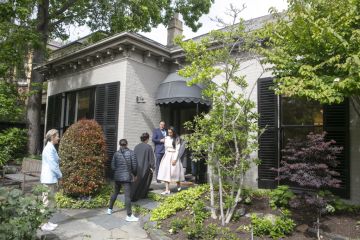TINA's Drinks: In search of simply the best non-alcoholic tipple
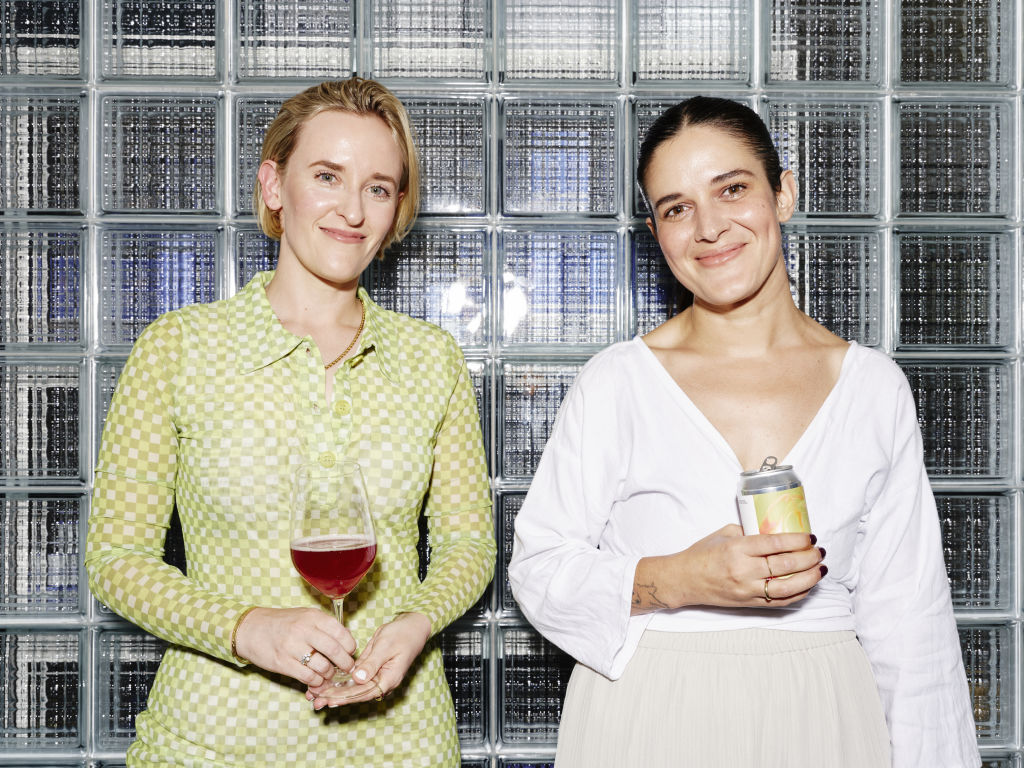
Melbourne beverage brand TINA is 100 per cent sure what it isn’t: the name is an acronym for “This Is Not Alcohol”. But what it is? That’s a little harder to categorise.
So much so that co-founders (and cousins) Christina Trabucco and Imogen Hayes try not to. “That’s kind of the schtick,” Trabucco says. “You know when people spend all their time trying to categorise music? Like, ‘This is shoegaze’. It’s boring – just enjoy it!”
With the tagline “all natural, lightly sparkling, deliciously complex, no alcohol”, TINA (This Is Not Alcohol) is a natural fit on the booze-free section of a drinks list. But in making it, Trabucco and Hayes were more interested in flavour than nuzzling into the non-alc market. “Beverage is our common thread,” Trabucco says. “It was meant to be, in that way.”
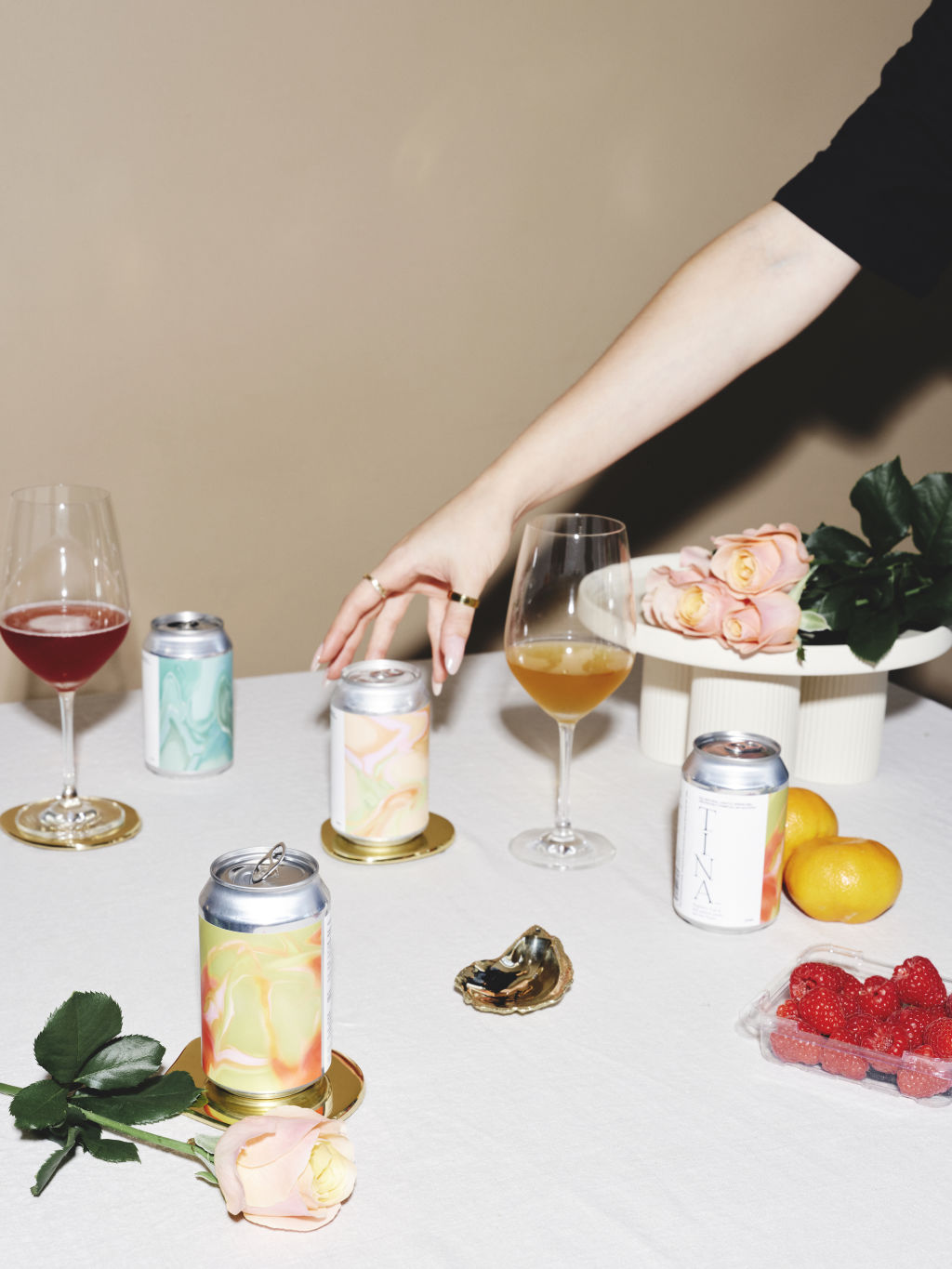
Since 2013, Trabucco has been working to give Melburnians the same level of understanding and appreciation for tea as they have for coffee. “[Tea is] about a decade behind coffee,” she figures. Through her Carlton cafe and wholesale business, Assembly, she sources and shares rare-gem teas from all over the world, particularly East Asia.
Meanwhile, Hayes was in the wine-export world. Selling mainly to Asia and the US, she spent time living in Hong Kong and Taiwan, learning Mandarin along the way. So when Trabucco invited her on a tea-buying trip back to Taiwan, she was in. And it sparked something.
“I really began to notice the synergy between tea and wine – and us,” Hayes says. “I saw the parallels between the complexity of tea and how it’s produced, which I knew very little about, and also the tannin structure that it can create in a beverage.”
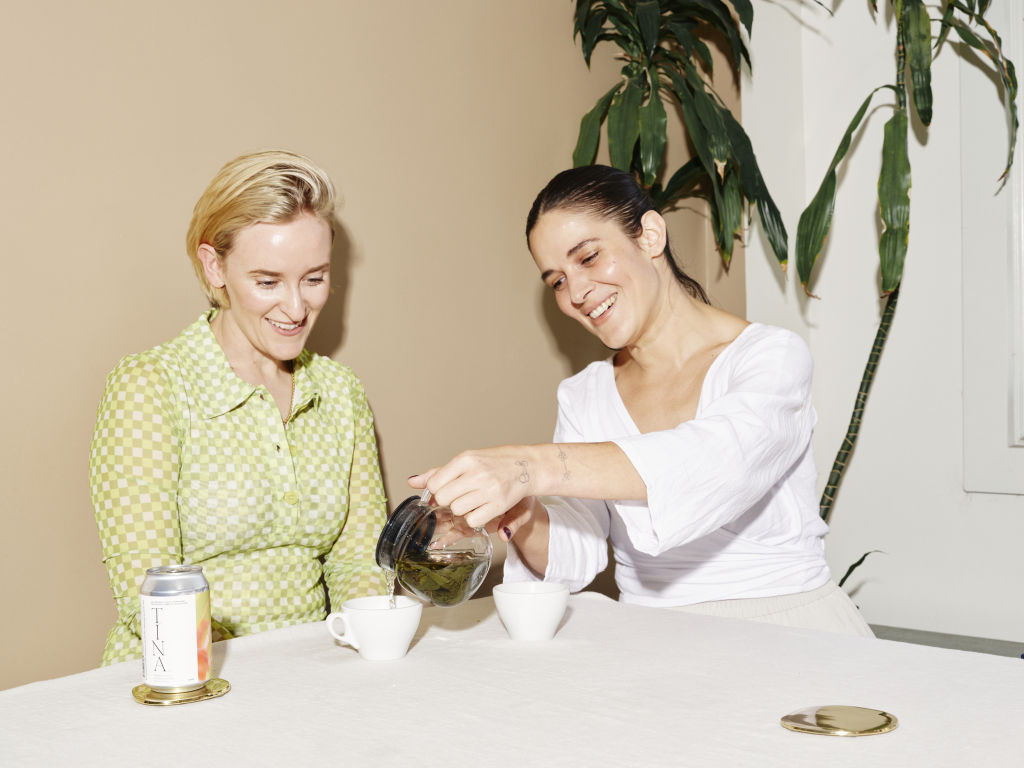
On that trip, one Taiwanese tea blew Trabucco’s mind: it was a high-mountain oolong called Dong Ding. “It’s wildly complex, incredibly floral, almost biscuity, there’s honeydew melon,” she says. “Nothing else tastes like that. It’s still my favourite tea.”
Having a vino in Carlton Wine Room just before Covid shut the world down, Trabucco and Hayes decided that tea was to form the basis of their debut drink: TINA 1.0.
 The butterfly effect: Marisa Mu is making big waves in the art world
The butterfly effect: Marisa Mu is making big waves in the art world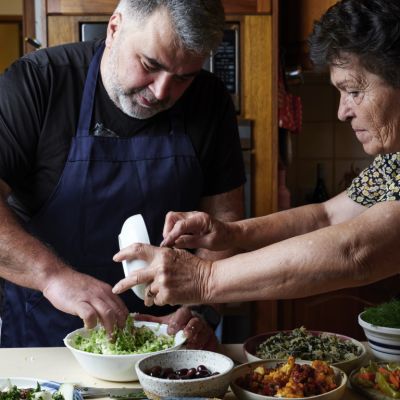 ASRC founder Kon Karapanagiotidis on building cultural connections through food
ASRC founder Kon Karapanagiotidis on building cultural connections through food Meet the man bringing distinctly Melbourne flavours to the zero-alcohol scene
Meet the man bringing distinctly Melbourne flavours to the zero-alcohol scene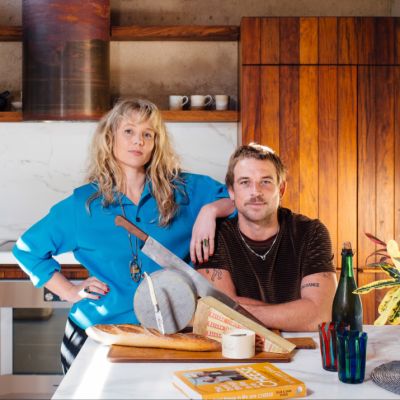 Aussie siblings Sam and Ellie Studd want to make cheese “fun, sexy and accessible”
Aussie siblings Sam and Ellie Studd want to make cheese “fun, sexy and accessible”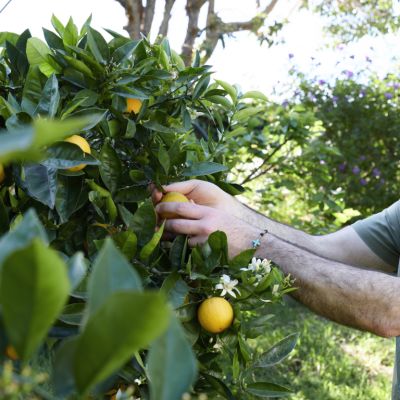 Joseph Abboud: From high school dropout to celebrated chef
Joseph Abboud: From high school dropout to celebrated chef
“I started playing around with 48-hour extractions, which is a bit unusual,” Trabucco explains. “And different infusions: what would happen if it’s agitated for 30 seconds at 12 hours? There’s so much nuance to it. Everything single thing you do has an effect.”
Trabucco pauses. “We’re talking a lot about tea, but there’s 12 ingredients in there!”
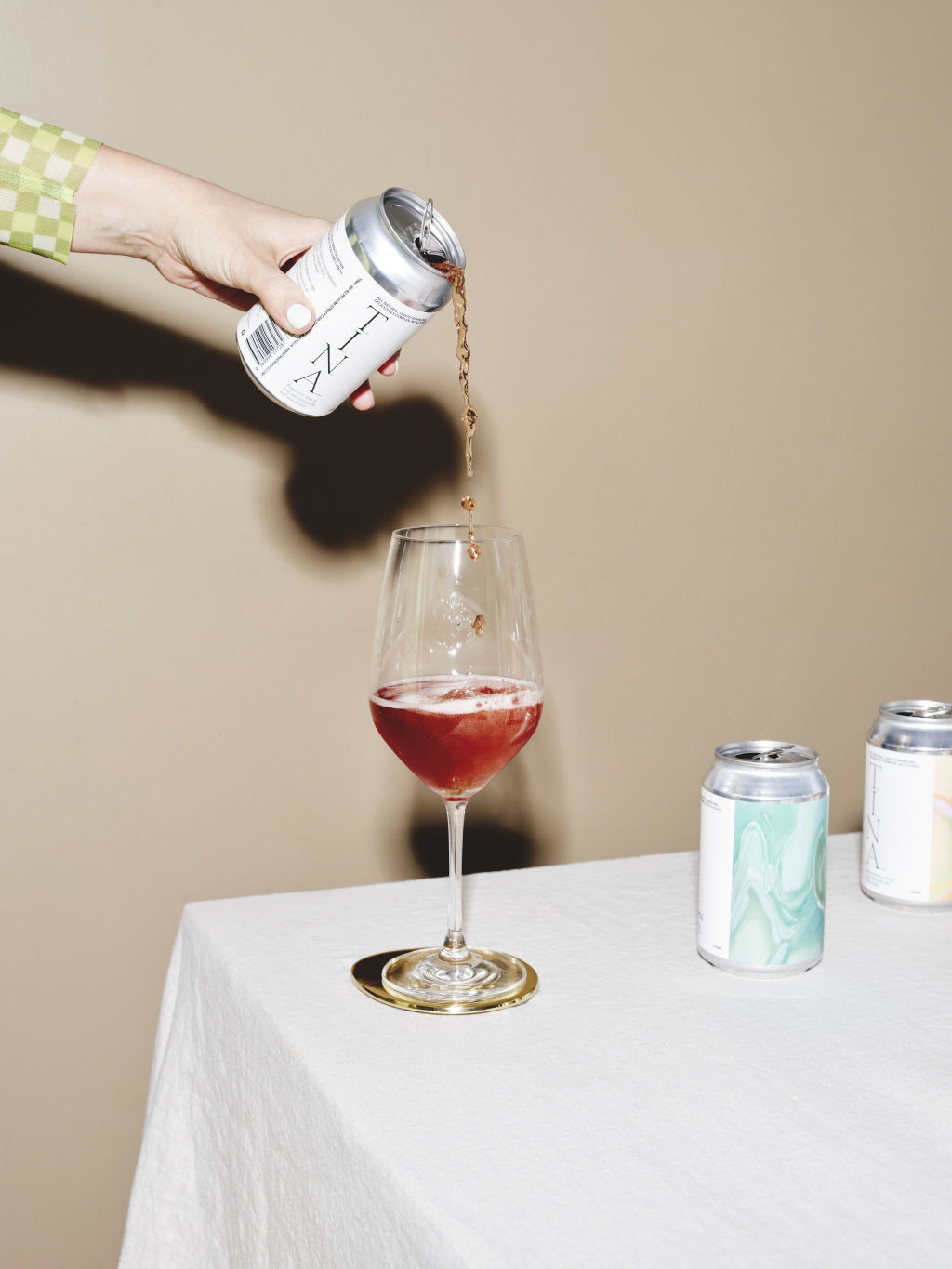
The goal was to create a drink that was delicious, well-balanced, truly interesting and geared towards the night-time market. Something new, so there was no set formula.
Trabucco’s experimentation led her to botanicals and fruits she loved. She introduced to the mix honeybush, lemon myrtle, rose, pear and monkfruit juices, verjuice, calamansi lime and roasted coriander – trialling various methods and amounts as she went.
“To make a complete drink, you need aroma, tannin, acidity all working together,” Hayes says. “We really focused on that harmony.” Trabucco adds: “It’s a fun challenge to get them to sit where they should in the drink.” The “aha!” moment was a long time coming.
For such a singular product, the initial reception was promising. “I stalked down a winemaker I knew in a food court and made him taste it,” Hayes remembers. “Everyone thought we were a bit crazy.” But getting traction was “surprisingly easy”, Trabucco says. “The people who really mattered loved it,” she says of early supporters (and stockists) like Campbell Burton of Public Wine Shop and Dan Sims of Pinot Palooza.
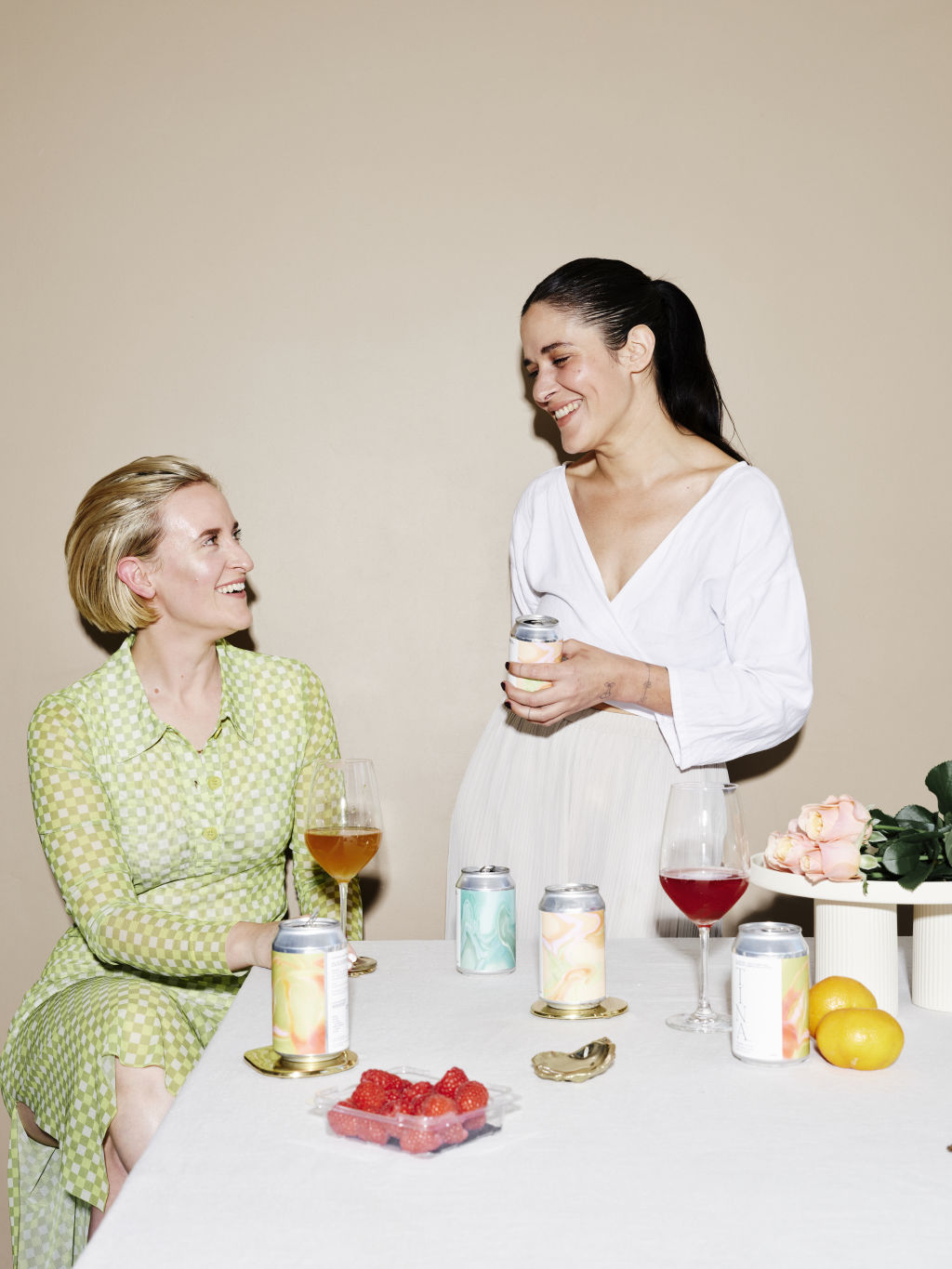
Perhaps TINA’s success hinges on its rejection of pigeonholing. “TINA doesn’t fit a category, neither should you” – that’s how Trabucco sums up the brand’s messaging.
It’s not a soft drink. Nor is it trying to mimic beer or wine, or a cocktail, in any way. But, Hayes says, “While it’s complex and interesting, we also want it to be accessible. We want people to crack it in the park, have it at a wine bar, have it at a club.”
In just a few years, the label has been embraced by the kinds of venues Trabucco and Hayes love – some of the state’s best (and beyond). Find it at top restaurants like Brae, Lee Ho Fook and Supernormal; wine bars like Embla, Hope St Radio and Bahama Gold; bottle-os and grocers like Blackhearts & Sparrows and Wild Things; and even at the club – Miscellania stocks it. It’s also in some of Sydney’s biggest-name venues – like Ester, Sixpenny, and P&V Wine and Liquor Merchants – and picking up pace in Brisbane, Adelaide and Perth.
Scaling up has its challenges. Trabucco runs production in concentrated bursts just outside Ballarat, then cans in Melbourne. In a huge kettle, every single ingredient is steeped for a different period of time, at a different temperature, for the maximum 6000-litre batches (any larger, Trabucco says, and you end up compromising on quality).
Because “it’s not just a matter of plug and play”, production runs are short but stressful. The recipe needs constant tweaking to account for seasonal differences in ingredients. “You can’t hold the reins too tight,” Trabucco explains. “At the end of the day, it’s not repeatable and you have to embrace that seasonality … The same way a wine producer can’t have the same vintage every year. That’s the nature of a natural product.”

TINA now has three flavours. The bestselling original, 1.0, has a delicate, floral profile that Trabucco says matches well with fresh, cold soba-noodle dishes.
For 2.0, “We wanted something a bit juicier [that] could stand up to more robust food,” Trabucco says. The base is jasmine pearl green tea, but raspberry (both the fruit and leaf) dials the volume right up, so it’s great for the pub. Have it with tomato-based dishes, Hayes says, “but my favourite pairing is steak tartare, if you’re up for it at home”.
3.0 is an ode to Bondi – starring energising ginkgo leaf – for the 20th anniversary of Sydney’s Icebergs Dining Room and Bar. “We were going for something that tasted like a morning swim after you’d stayed up all night,” Hayes says. The saline hit is there, alongside ripe guava, making it a perfect match for freshly shucked oysters or spaghetti alle vongole.
If these sound like curious concoctions, it’s because they are. Like an exciting bottle of wine, a can of TINA has the chutzpah to start stimulating dinner-party conversations. And not just because of the lack of alcohol.
“The culture is changing in Australia and people are starting to integrate more and more interesting non-alc options into their drinking lives,” Hayes says. “It’s become way more normalised. That has been the most rewarding thing to see over the past few years.”
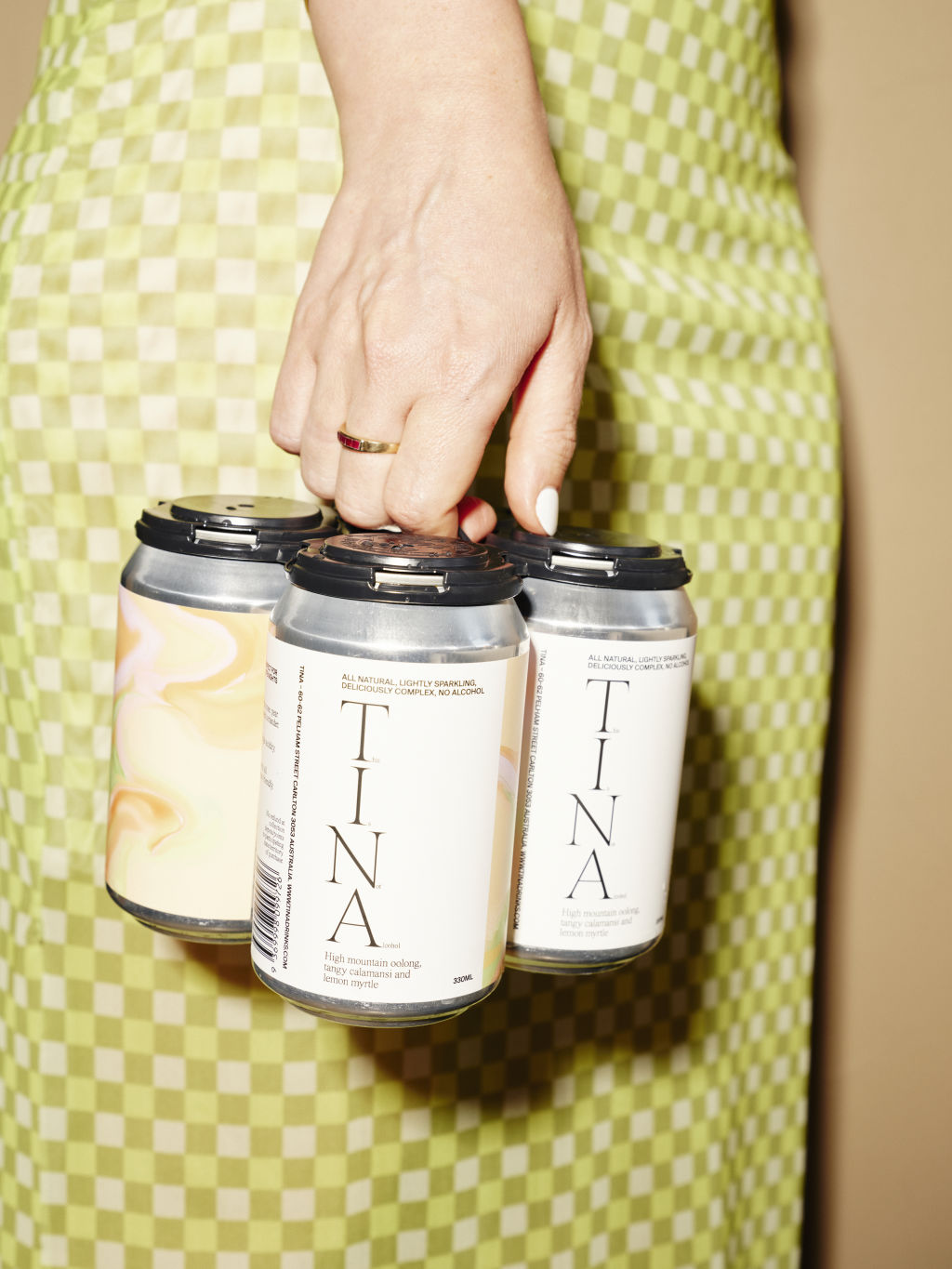
While TINA is undeniably appealing to (and appropriate for) non-drinkers, “We’re not sending a sober message,” Hayes says. “We drink. A lot of our customers still drink.”
“It’s the craft drinker who buys TINA – people who might also buy natural wine or craft beer … Or maybe they’ve just had enough wine for the night and want to alternate.”
But as much as the dial has shifted, non-alc is still a “big education piece” in some circles. “It’s a new space, there are heaps of types, and they’re hard to categorise.”
And, Trabucco says, some people will never get it. “One commenter on Facebook asked, ‘If it doesn’t have alcohol, what’s the point?’
“That’s literally the point.”
We recommend
We thought you might like
States
Capital Cities
Capital Cities - Rentals
Popular Areas
Allhomes
More

